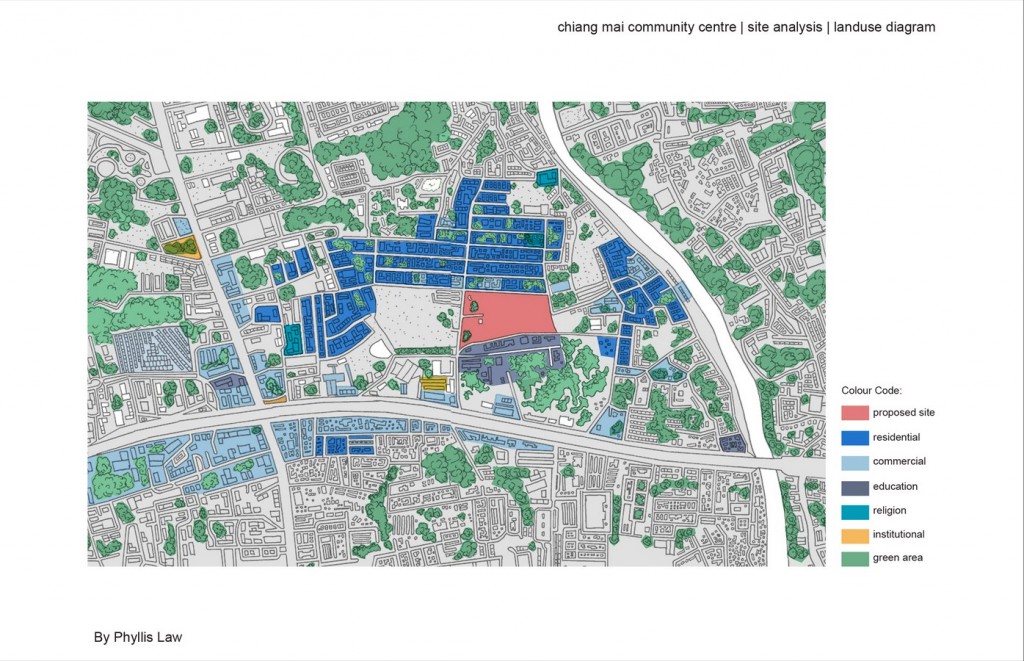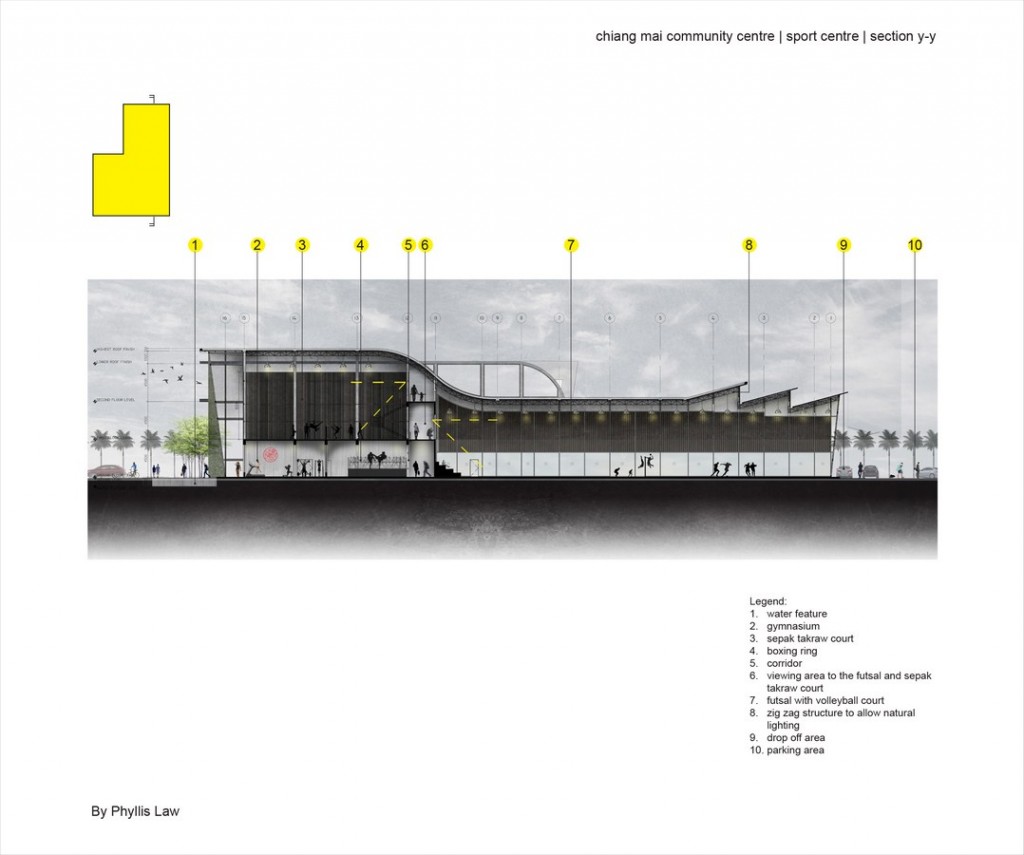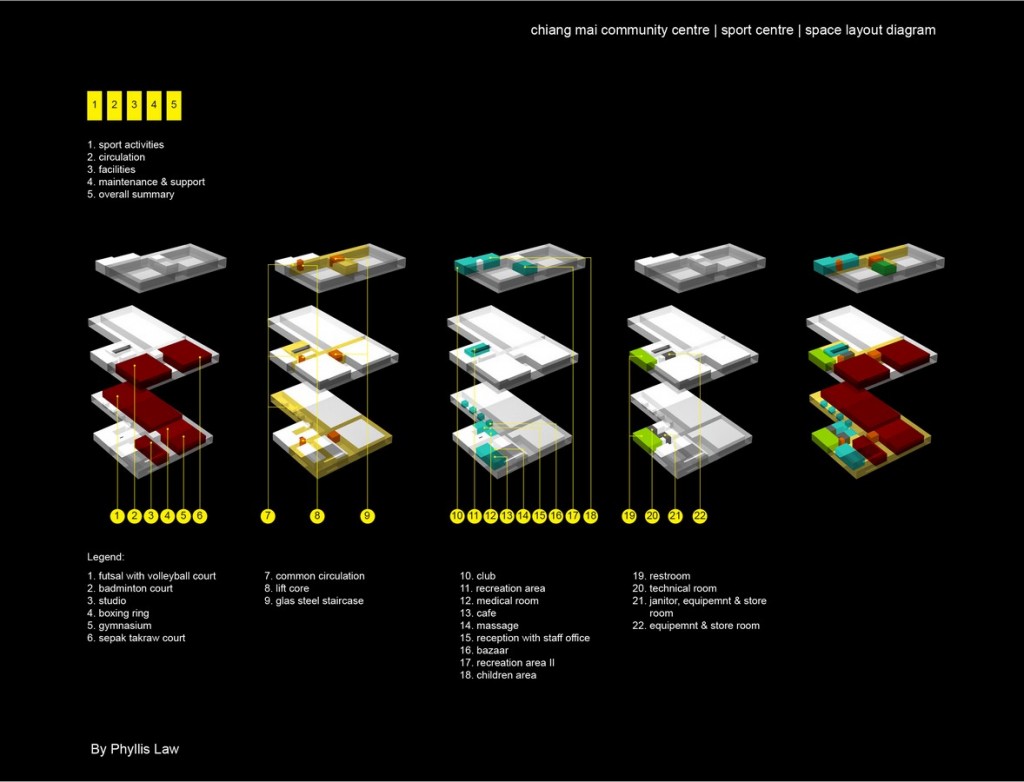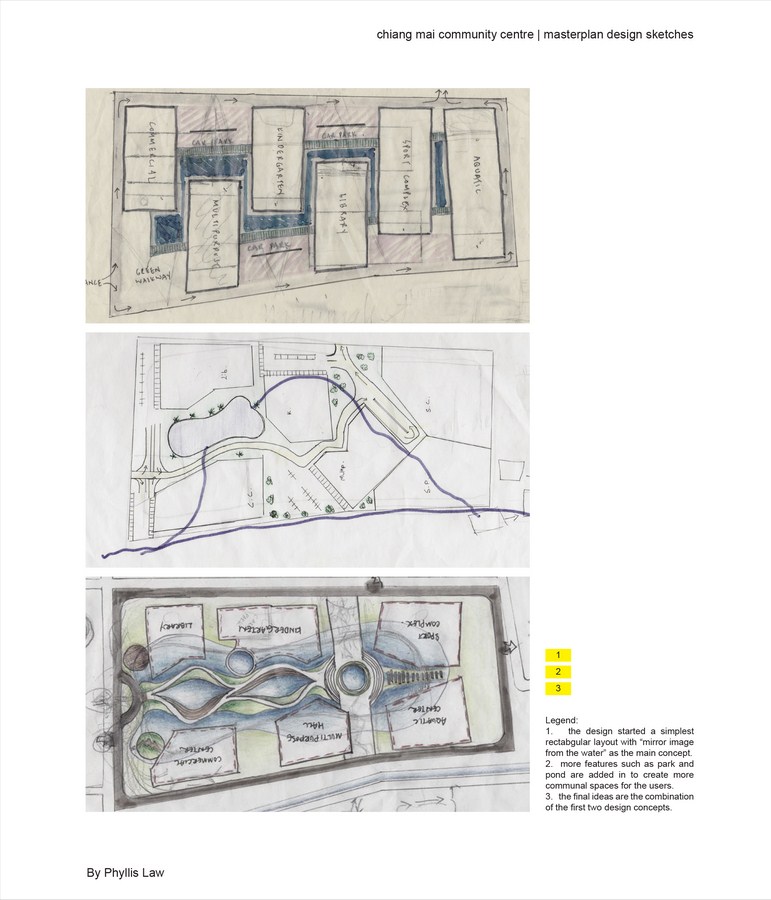Chiang Mai, though considered one of the most culturally significant and second largest city of Thailand, has a population of under 200 000. Historically, it was once the capital of the Lan Na Kingdom, which was also known as the “Kingdom of A Million Rice Fields”. The site of Chiang Mai Community Centre is spread over 12 acres and located at Sukkasem, Chiang Phuak Mueang Chiang Mai District. Its surroundings are mostly established by residential and mixed developmental buildings.
Architect: Phyllis Law Tze Cin
Location: Chiang Mai, Thailand
Status: Concept

Both masterplan and building design intention are derived from Lanna architecture.
What is Lanna architecture?
“Lanna is a concept of simplicity and humility, coming from nature,” said Jullatat Kitibud, a modernist architect.
Masterplan Design Idea

Simplicity: The building plots are distributed asymmetrically along the site boundary. An axis starting with the taxi drop off, leading the green communal spaces and lastly defining the end of the axis with a green shaded pathway.
Nature: Green, pollutants free and vehicles-hazard free communal spaces are achieved by placing the road away from the centre of the site.

Communal: The centralized water features act as the mean of access from building to building, but also as a essential instrument to link up the community.
Community Sport Centre Design Idea

Simplicity: A strong linear axis cutting through the center of the building works as the primary organizing element for the series of spaces. Vertical circulation element is located at the intersection point of the main axis and the secondary corridors, which is always a point of decision making for the person approaching it.

Nature: Curtain walls maximize natural lighting and open up the sport centre towards a broad vista. Part of the building is articulated with patterned green walls and louvres which cast shades and shadows that animates the space of the room, and articulates the forms within it.
Humility; With humble attitude in mind, everyone is welcomed disregarding of their skin colour or races. Secondary corridors which direct the user to the communal or recreation areas such as the lounge, reading area, massage centre and etc, act as hubs for the community to gather and interact.
[author title=”Phyllis Law” image=”https://www.re-thinkingthefuture.com/wp-content/uploads/2016/07/Phyllis-n.jpg”]Phyllis has graduated in Diploma in Architecture from Tunku Abdul Rahman University College and currently doing her BSc (Hons) in Architecture at UCSI University. Her passion in exploring, adventuring and taking up challenges whips up her curiosity and interest in different styles of architecture ever since she was a little girl. She had also won the PAM Best Student Award in year 2015.[/author]
Next Post
Hybrid city | Alisa Silanteva
3 Mins Read





